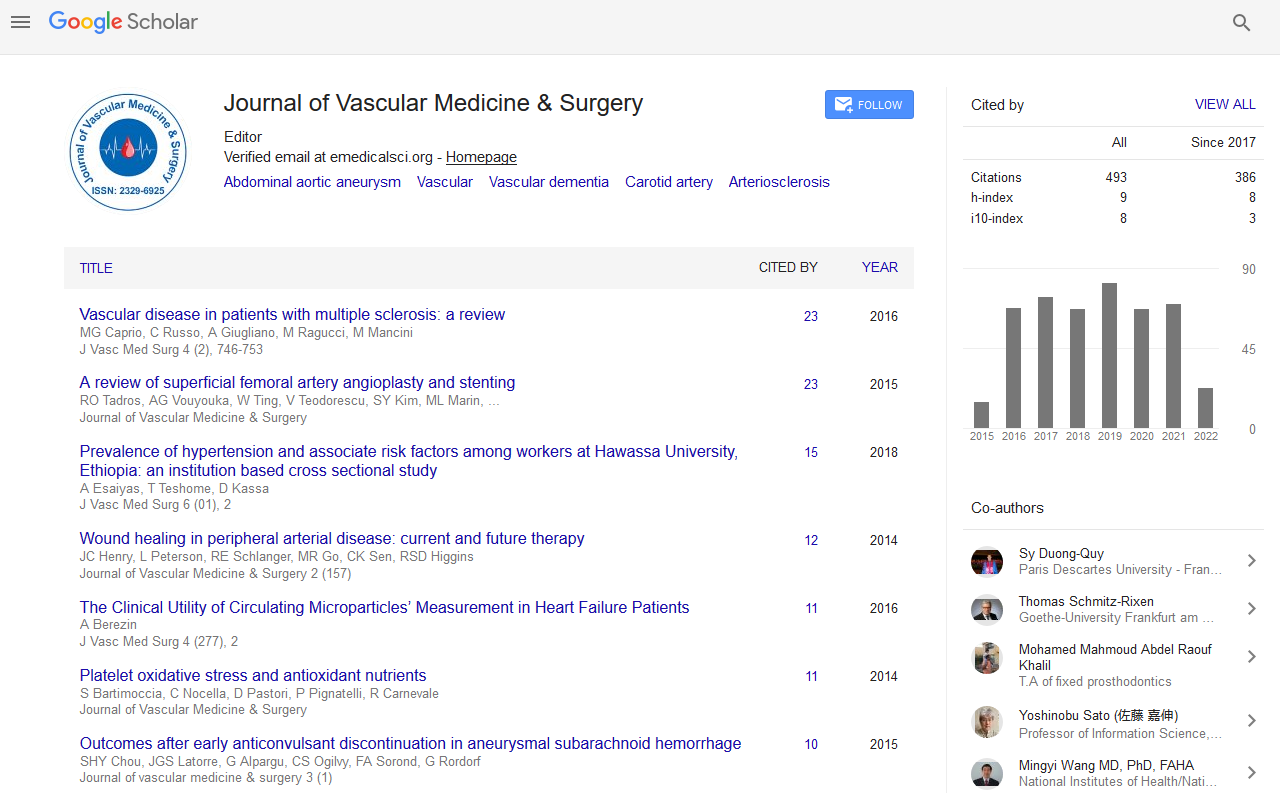Indexed In
- Open J Gate
- Academic Keys
- RefSeek
- Hamdard University
- EBSCO A-Z
- OCLC- WorldCat
- Publons
- Euro Pub
- Google Scholar
Useful Links
Share This Page
Journal Flyer

Open Access Journals
- Agri and Aquaculture
- Biochemistry
- Bioinformatics & Systems Biology
- Business & Management
- Chemistry
- Clinical Sciences
- Engineering
- Food & Nutrition
- General Science
- Genetics & Molecular Biology
- Immunology & Microbiology
- Medical Sciences
- Neuroscience & Psychology
- Nursing & Health Care
- Pharmaceutical Sciences
Abstract
Dynamic Quantitative Contrast-enhanced Ultrasound for Assessment of Cilostazol Induced Pro-angiogenic Therapeutic Effects on Skeletal Muscle Microcirculation in Peripheral Arterial Disease
Kauczor HU, Amarteifio E, Partovi S, Weber MA, Macys L, Delorme S, Krix M, Böckler D and Demirel S
Purpose: To assess the effect of cilostazol on muscular microperfusion in patients with peripheral artery occlusive disease (PAOD) using dynamic quantitative contrast-enhanced ultrasound (CEUS). Materials and Methods: 20 patients with PAOD, Rutherford classification grade I, category III were evaluated performing CEUS with the arterial occlusion paradigm, ankle-brachial-index (ABI) and treadmill walking distance test before and after oral treatment with cilostazol for three months. Microperfusion of the calf skeletal muscle was assessed using quantitative CEUS parameters which were extracted from time signal-intensity curves (TIC). Results: 10 patients had to be taken off medication secondary to side effects. Maximum CEUS signal enhancement prior to therapy was 104 ± 69 ~mL compared to 114±68 ~mL post treatment (P=0.26). tmax was 34 ± 20 s before and 36 ± 23 s post treatment (P=0.51). Maximum slope of the TIC (m2) prior to therapy was 6.06 ± 5.55 ~mL/s and revealed to be 5.12 ± 3.30 ~mL/s post treatment (P=0.62). Area under the curve after the occlusion (AUCpost) was 3975.38 ± 2856.52 ~mL/s prior to cilostazol therapy compared to 4210.98 ± 2816.33 ~mL/s after therapy (P=0.39). The values for ABI and treadmill walking distance test did not differ significantly differ, either. Conclusion: In patients with PAOD, medical therapy with cilostazol seems not to be associated with significant improvement of muscular microperfusion as assessed by dynamic quantitative CEUS. This study demonstrates the feasibility of the CEUS technique to evaluate response to pro-angiogenic drug treatment and confirmation of results in a larger population is warranted.


